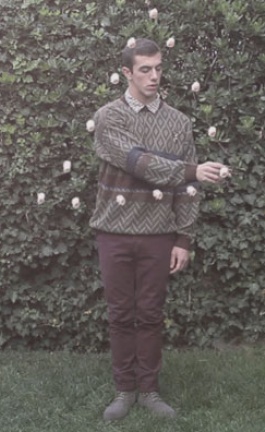photo © Ian Allen, Courtesy of 3x1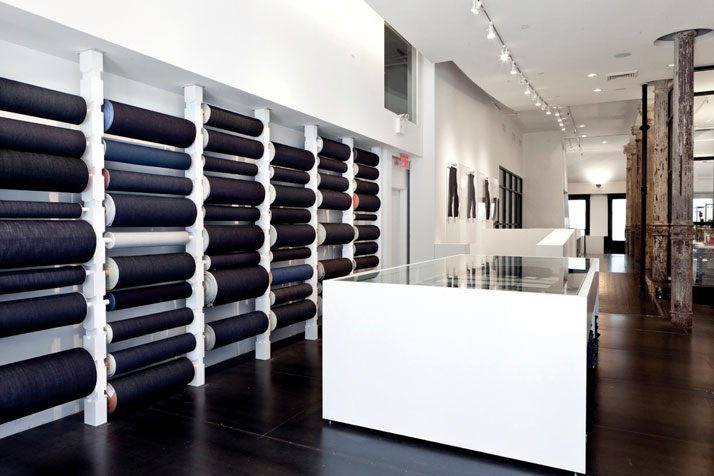
Here at Yatzer, we are always on the lookout not only for great artistic value but also for innovative and artistic business ventures. As options continue to grow and consumers feel overwhelmed with decisions, it is easy, at times, to forget about the quality and authenticity that makes a product great. As we continue to curate the world around us, we recently visited 3x1 in New York City and felt compelled to Yatzerize them. photo © Ian Allen, Courtesy of 3x1
3x1 is nestled in the always bustling SoHo neighborhood in New York City and references designer Scott Morrison's third venture following Paper Denim & Cloth (1999) and Earnest Sewn (2004). Derived from the denim's standard weaving construction, 3x1 Right Hand Twill, 3x1 is defined by transparency, value and uniqueness with only one location at 15 Mercer Street where the retail, design studio, gallery space and manufacturing take place right in front of our eyes. With a total of 4,000 square feet of retail and 3,200 square feet of design studio space, 3x1 is giving consumers the entire denim cycle from conception, manufacturing up to eventually taking a new pair of jeans home to wear. The storefront is captivating as you notice an immense collection of denim fabrics displayed in the gallery. Upon further investigation, we learned that the denim is of the highest quality emanating from Japan and North Carolina. With its great history and tradition of great denim, 3x1 creates an environment where each consumer is tailored and given the opportunity to create a one of a kind pair of raw or selvage denim jeans. Say goodbye to the painful process of finding a great pair of jeans for your body type and enter into your own personal denim experience!
As denim is such an ingrained product in our contemporary society, we wanted to explore what makes a great denim product and what 3x1 has done to bring a quality denim experience to consumers. Here is a brief interview with the Co-Founder and Designer of 3x1 Jeans, Scott Morrison.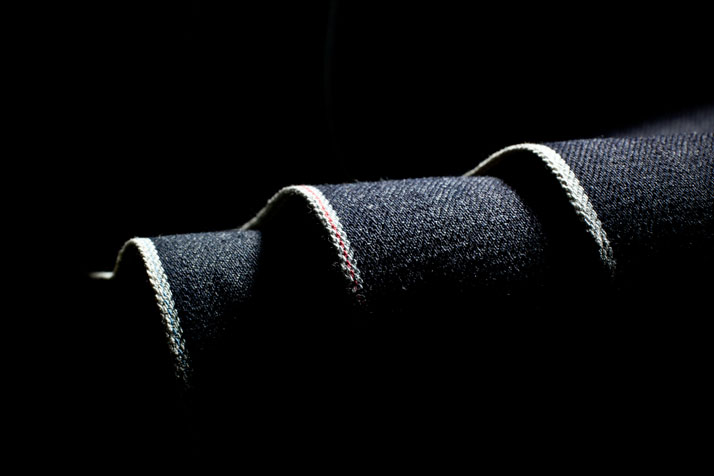
photo © Ian Allen, Courtesy of 3x1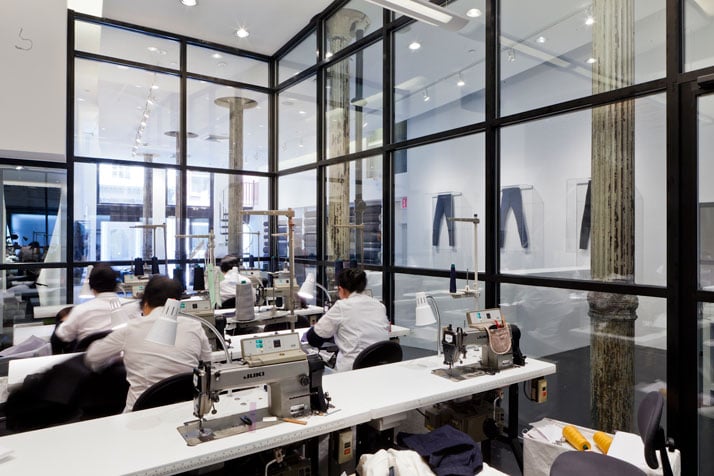
What is the concept behind 3x1? Why does it stand apart from your other past ventures? photo © Ian Allen, Courtesy of 3x1
We're doing a couple things at 3x1: creating the world's first denim atelier and, in doing so, introducing the first luxury denim brand. More importantly, we're presenting something never before seen in retail, a concept which combines manufacturing with the retail environment itself epitomizing modern day values of transparency and exclusivity, while educating and informing the customer in a way that's never been done.
One hundred percent of our products are made in our atelier, which is housed in three separate glass rooms. Every jean is produced in a limited quantity of 8, 12, 16 or 24 pieces and is individually numbered. We also make Custom Made and Bespoke jeans where customers can pick from one of our styles and have a jean made in any denim of their choosing (we have more than 70 selvedge denims and 65 non-selvedge denims to choose from), or they can arrange for a Bespoke appointment and bring in their own ideas and inspirations and sit down with one of our Denim Specialists as well as our head patternmaker to make something totally unique, and truly one of a kind. In the Bespoke process we digitize the pattern, keeping the pattern for future use, so the customer can call us from wherever they may be and have another one made, in a completely different denim, fabric, stitch design, etc.
3x1 differs from Paper Denim & Cloth in that it was a large volume operation and Earnest Sewn was very much a story about American heritage, both product wise and visually in the store. At 3x1, we offer complete customization and allow for the customer to watch the entire process!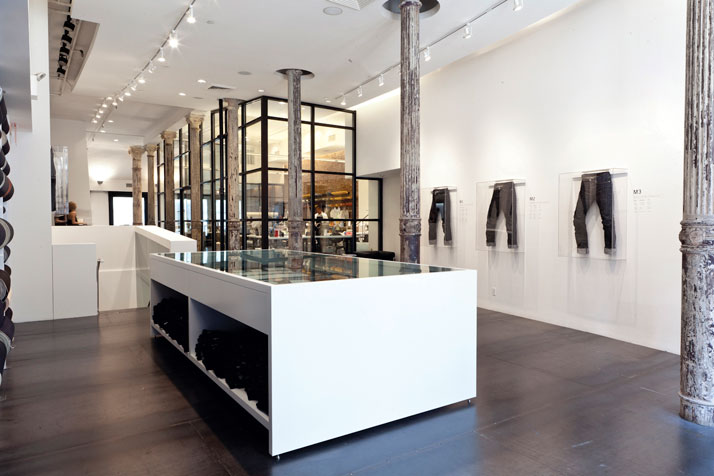
photo © Ian Allen, Courtesy of 3x1
photo © Ian Allen, Courtesy of 3x1 3x1 has an interesting approach to not only retail but apparel. Using the retail space as a design center and showroom as well as in the manufacturing process, it more resembles a typical restaurant model than a clothing enterprise. Why did you decide to approach your concept in this manner? How big is your current denim collection? Explain the difference between your denim types at 3x1? We source a number of different denims at 3x1 (more than 135 at last count), but most vary based on a couple of criteria: 1) weights (light weights at 7 oz., 12-13 oz. for mid-weights, up to18 oz. for super heavy, novelty weights), 2) shade or color (casts) which are variations of indigo hues (red, green, purple, etc.), and finally 3) construction. Construction relates to the twill line itself (i.e. a 3x1 right-hand or left-hand twill), or to the yarns themselves (both in size of warp and weft or in color as sometimes the weft yarns are tinted for effect), and even the selvedge color. I personally select each of our denims based on uniqueness and quality. We also try to represent the best denim mills in the world and currently use more than 18 different mills from Japan, Turkey, Italy and the USA. 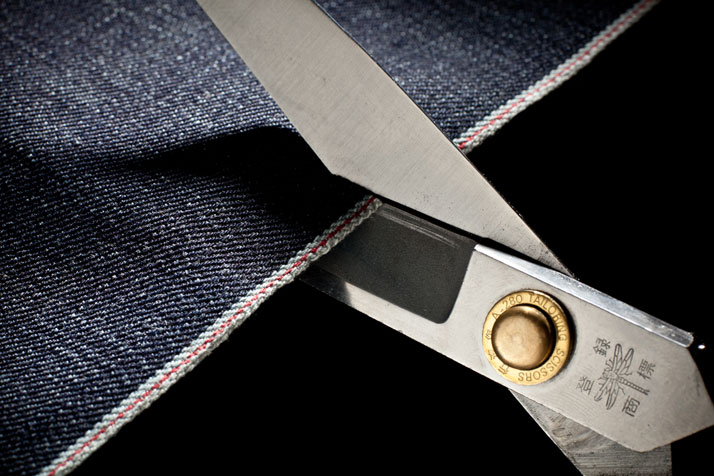
(Please see above.) We wanted to invite the customer into the process and provide complete transparency without compromising workflow. To this end, glass walls were built to divide Cutting & Sewing in the main room from Pre-Finishing (Steam-Pressing) and Finishing. Much like a restaurant’s kitchen, supplies needed to reside in the location where they are used, so threads and accessories were literally mounted onto walls and storage bins were created next to each machine.
I've probably got a dozen or two pairs at home here in the city, but my denim collection (if you will) is at my house upstate. There are probably more than 300 pairs—many of which are from my own labels, but far too many for anyone who's not in the denim industry to rightfully own. My first pair of jeans were Levi's, but my love affair with denim started with my first pair of Replay jeans (which I still own) and happened to be a Limited Edition pair made from Japanese denim (which were pretty rare at the time, i.e. early/mid-90s).
photo © Costas Voyatzis, Courtesy of Yatzer.com
photo © Ian Allen, Courtesy of 3x1
photo © Ian Allen, Courtesy of 3x1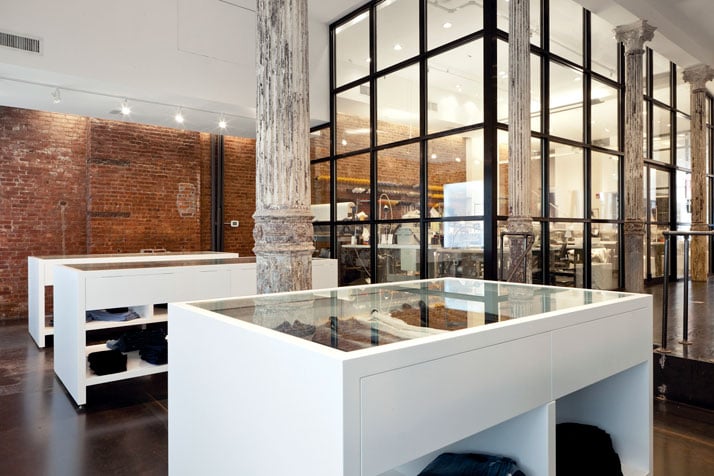
photo © Costas Voyatzis, Courtesy of Yatzer.com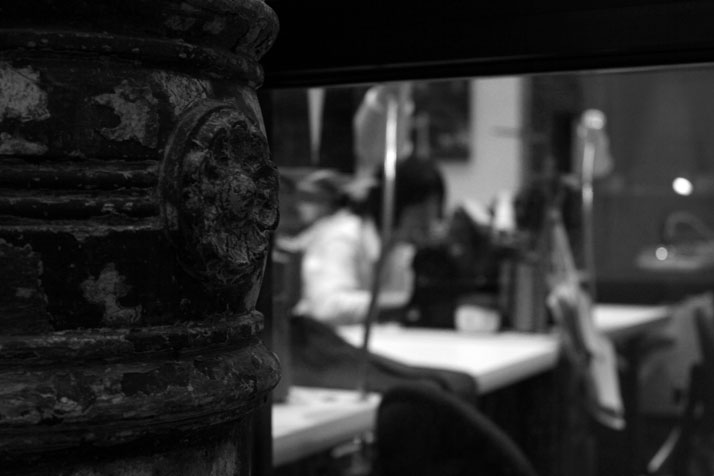
What makes a great denim, technically and stylistically?
The quality of materials is essentially the same for all our jeans: we use the best denim in the world, the best materials including RiRi zippers, Japanese and American dye cast buttons, superior quality threads and single needle sewing with 12-14 spi (stitches per inch). The Bespoke experience is unique because of the level of personalization and, and specifically, the design and pattern making time involved. Typically it takes around 6 hours to make a first pattern and another two to create a digital version once the jean has been approved and finalized.
3x1 is a leading model for the concept of customer experience and product quality. What else are you exploring in order to enhance the 3x1 retail experience and product line?
Anytime you, the consumer, have the opportunity to be involved in the process from beginning to end, a relationship is created with the product and the brand that's truly special. At our best, the 3x1 bespoke process allows for a customer to create a completely made-to-measure jean. 3x1's head patternmaker and I work with the customer to create a concept. The pattern is then digitized and kept on file so that any subsequent orders can be taken over the phone from anywhere in the world. But there is more to us than that. Every customer who walks into the door gets to customize their jeans by selecting their choice of button, rivets and hem length at no additional charge. And if you see something you like already made, but wish it was in a different fabric, we can make that for you too. With everything being made in house, all behind glass, where our customer can see every step – the product line itself is only limited by what our customers and I want to create.
photo © Costas Voyatzis, Courtesy of Yatzer.com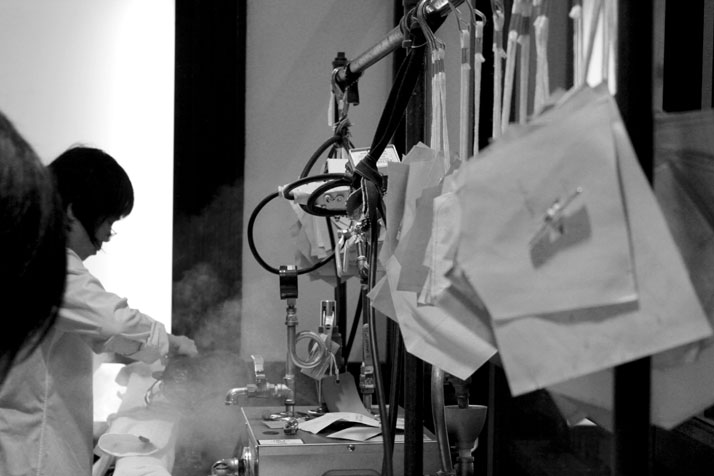
photo © Ian Allen, Courtesy of 3x1
photo © Costas Voyatzis, Courtesy of Yatzer.com
photo © Ian Allen, Courtesy of 3x1
3x1 stands for quality denim and exceptional service as we have experienced. Could you explain your journey in obtaining the best fabrics and best trained experts in denim to serve customers? photo © Costas Voyatzis, Courtesy of Yatzer.com
At 3x1 we currently offer over 135 different denims from Japan, Italy, Turkey and domestically, from Cone Mills. Many of those denims are some of the rarest and most exceptional in the world, not to mention the most expensive. In many cases the mills come to us to showcase their best ideas…in some cases, we work with them directly to create something that is missing in the market or in our store. But, in every case, we’re vying to find the most beautiful, highest quality denims in the world – wherever they come from, no matter the cost.
What are some of the challenges facing the denim market today?
The quality of a 3x1 jean is just different than something that is mass produced in a typical garment factory setting. The way we have set up our equipment, the way we cut (by hand with shears), down to the way we sew and finish a jean – it’s simply better but more expensive.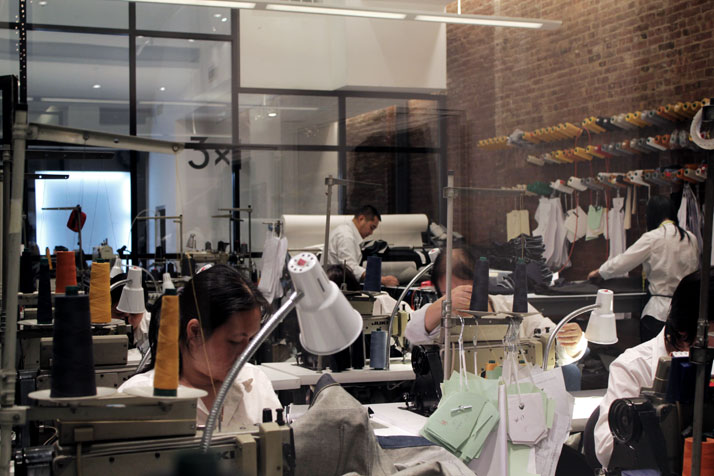
Could you give us your insight on the importance of denim in our contemporary culture?
Jeans are so universal today and are being made and produced in hundreds of countries. It's very much a thing for everyone, in every walk of life as they’ve become acceptable in almost any situation. You can wear them to an office, restaurant, nightclub, essentially anywhere.
Just for practical purposes, what is the ideal collection of denim (quantity, type, wash, cut, color, etc.) that women and men should have in their closet for any occasion?
With less than 25 pair of jeans being made each day, each is really special and, therefore, they're all a bit my favorite but, if I had to pick, I'd probably take a pair of M3 or M4's (fit) in the xx60 denim with pocket #17 and either Burnt Orange or Egyptian Topaz colored thread or, if I was picking something for a woman, I'd suggest a pair of W2 Slingshot's in either Black Overdye or one of our stretch indigo denims. Either way, I'd use a RiRi zipper, matching thread color, Matte Black button and no rivets.
There are a couple of things most customers might not think of when selecting the perfect jean: back pocket size should be proportional, and back pocket placement should be based on the customers shape, size and height. Also, depending on how much you use your front pockets, we can make the pocket opening slightly larger and either increase or decrease the size of the pocket bags according to use. Inseam lengths are also typically different on most people's legs, but there is rarely a noticeable difference—that being said, it's always nice to measure.
photo © Costas Voyatzis, Courtesy of Yatzer.com
photo © Ian Allen, Courtesy of 3x1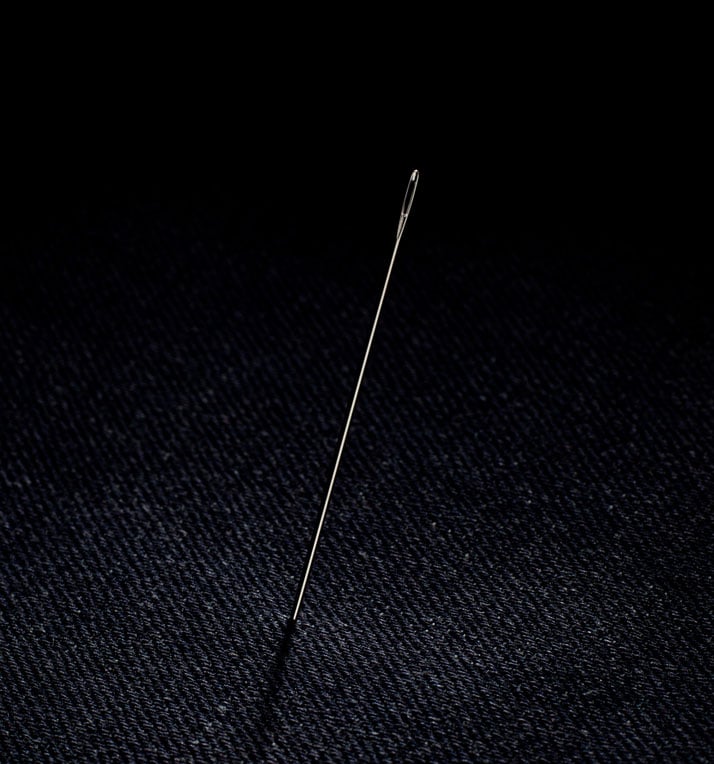
photo © Ian Allen, Courtesy of 3x1






